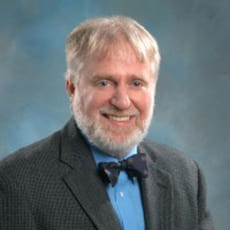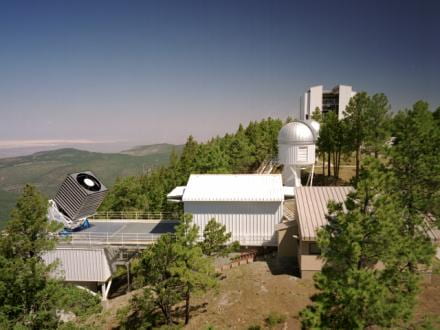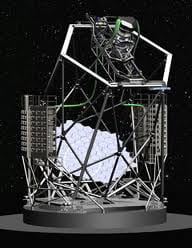Faculty Profile: Donald Schneider
|
Donald Schneider Distinguished Professor of Astronomy & Astrophysics 525 Davey Lab Phone: +1 814-863-9554 |
 |
During the past three decades most of my research effort has been devoted to large scale optical/near infrared surveys of the extragalactic sky with an emphasis on distant quasars. As Chairman of the Quasar Science Working Group of the Sloan Digital Sky Survey-I/II (SDSS-I/II), I participated in the construction of the largest spectroscopic (over 100,000 objects) and photometric (approximately one million sources) quasar databases in existence. This survey discovered the first quasars above redshift six and identified the end of the era of hydrogen reionization of the intergalactic medium.

I am currently involved with several international surveys of which Penn State is a member institution. I am the Survey Coordinator of SDSS-III, a project that consists of four surveys: the Baryon Acoustic Oscillations Survey (BOSS), which will map the spatial distribution of 1.5 million galaxies and 150,000 quasars to investigate the expansion rate of the universe; the Sloan Extension for Galactic Understanding and Exploration (SEGUE), which measures the velocities and compositions of hundreds of thousands of Galactic stars, the Multi-object APO Radial Velocity Exoplanet Large-area Survey (MARVELS), which monitors thousands of nearby stars to detect planets, and the APO Galactic Evolution Experiment (APOGEE), which will obtain high-resolution infrared spectra of approximately 100,000 stars in dust-obscured regions to investigate the Galaxy’s dynamics and chemical history. SDSS-III began operations in July 2008 and will continue until May 2014.
 In 2014 the first observations of the Hobby Eberly Telescope Dark Energy Experiment (HETDEX) will begin, following a substantial upgrade to the optics of the HET. This survey, led by the University of Texas, will obtain spectra of nearly a million Lyman-alpha emission line galaxies, located at redshifts between two and four, and use this information to measure the expansion history of the early universe and the properties of the formation of galaxies when the Universe was approximately 15% of its current age.
In 2014 the first observations of the Hobby Eberly Telescope Dark Energy Experiment (HETDEX) will begin, following a substantial upgrade to the optics of the HET. This survey, led by the University of Texas, will obtain spectra of nearly a million Lyman-alpha emission line galaxies, located at redshifts between two and four, and use this information to measure the expansion history of the early universe and the properties of the formation of galaxies when the Universe was approximately 15% of its current age.
Penn State is playing an active role in the development of the Large Synoptic Survey Telescope (LSST), an 8-m instrument with a 3.2 Gpixel, 9.6 square degree field of view that will repeatedly survey over half of the celestial sphere. The telescope will be located in northern Chile and is scheduled to begin observations later in this decade. The telescope will obtain images in six filters spanning the ultraviolet to the near infrared, and will observe each field hundreds of times during the first 10 years of operations. I am a member of the LSST Active Galactic Nuclei Science Collaboration.
